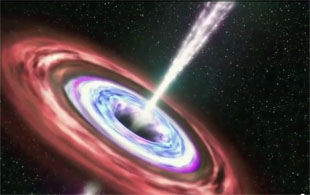 The sight of a star being absorbed by a million-solar-mass black hole was observed by a group of scientists for the first time in history.
The sight of a star being absorbed by a million-solar-mass black hole was observed by a group of scientists for the first time in history.
The Ministry of Education, Science, and Technology announced on August 24 that 5 researchers from the Center for Exploration of the Origin of the Universe of SNU's Department of Physics and Astronomy led by Professor LIM Myung Shin and an international joint research team including 7 Korean researchers have succeeded in observing the moment when the brightness of a massive black hole increases in the process of stellar disruption.
A black hole is a celestial body with a strong gravity which makes even light unable to get out. It is created usually when a massive star collapses due to its own powerful gravitational pull. Among black holes,"massive" ones refer to those that are much heavier than regular ones. They weigh from a million times to several billion times more than the sun. The massive black hole observed this time is about 10 million times heavier than the sun. In March of this year, NASA's satellite 'Swift' observed the phenomenon, in which the center of a 3.9 billion light year-distant galaxy was abruptly brightened. NASA named the celestial body"Swift J1644+57."
Since that discovery, the international research team, composed of 58 researchers from 6 different nations and including some Koreans, has kept an eye on the planet Swift J1644+57. As a result, they have found that a bunch of strong beams is spewed as high temperature plasma particles are emitted, when the debris of a star, which was crushed by the strong gravity of a black hole, falls into that very black hole.
"We have provided new evidence of the existence of a super massive black hole by succeeding in observing a phenomenon that was once just speculated theoretically," said Professor LIM, who added,"It is also a newly found fact that the debris of a star emits a bunch of strong beams when falling into a black hole." These research results were published in the August 25, 2011 issue of Nature.
Written by LEE Tae Joon, SNU English Editor, leetjoon@hanmail.net ?
Proofread by Brett Johnson, SNU English Editor, morningcalm2@gmail.com

